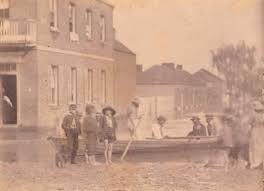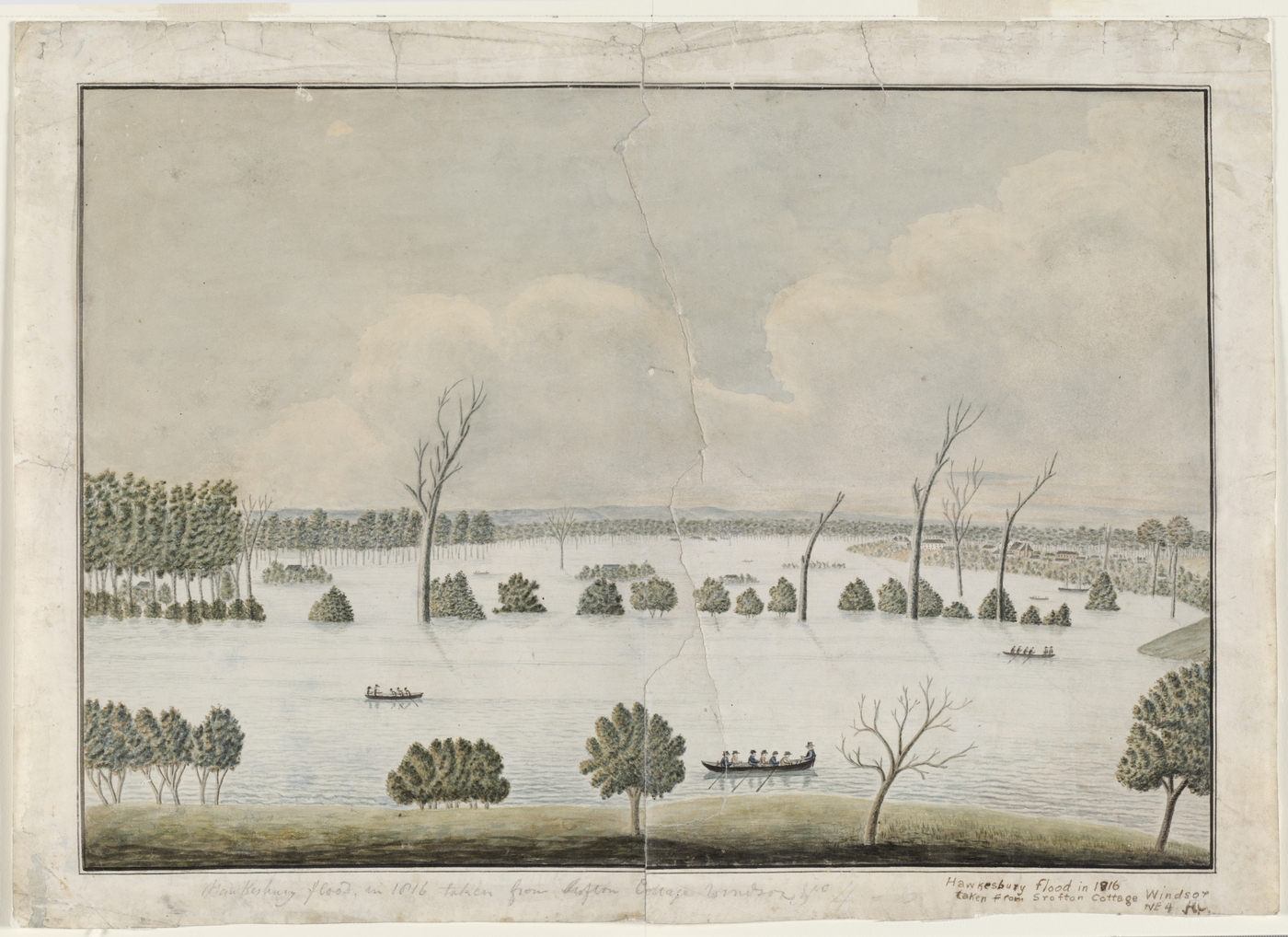A La Niña event spanning 1860–1864 brought repeated widespread flooding to settlements across NSW. This succession of natural disasters demoralised rural communities and devastated agricultural endeavors.
The floods in 1863 and 1864 were the most severe with much of the New England and Hunter Valley regions inundated with floodwaters.

‘We have [Casino] been visited by the largest flood ever witnessed by white men… The water rose at a rapid rate – the last twelve hours two feet an hour… I believe that is ten or twelve feet higher than the largest ever seen,’ reported a correspondent for Clarence and Richmond Examiner and New England Advertiser after heavy rain fell in February 1863. Similar stories were reported for Grafton, Armidale and settlements along the Bremer and Brisbane rivers.
This spate of wet weather in 1863 put a strain on the newly founded trade route between the Clarence Valley and Queensland.
‘The first visit of the “Grafton” to Brisbane could not have happened at a time more prejudicial to opening a trade between Queensland and the Clarence… The district was suffering from the ravages of the most extraordinary flood with which we have ever been visited, and unfortunately the floods have been succeeded by such continuous wet weather, that the producers of the district, have been so thoroughly dispirited that they have been unable even to make the best of the circumstances, through which they have been passing,’ claimed the Clarence and Richmond Examiner.
The district again endured extensive flooding the following year in 1864 along with towns further south including Tamworth and Maitland.
‘This part of the country [Tamworth] has been visited with one of those awful floods, with which the colony is sometimes afflicted, attended with a loss of life and property which will bring utter ruin to many and sadness and sorrow to all,’ reported a correspondent for the Sydney Morning Herald.
With houses completely submerged, Tamworth residents rallied to rescue their stranded neighbours.
‘Pattison with the assistance of everyone who could render it, set to work, and made and launched a tolerable boat , with oars complete, in little more than an hour…The force of the current was, however, too great. The boat was dashed against a stump, upset and sank. Firth swam to the nearest tree where he remained the night. Pattison took shelter on a house-top, and Dalton struck boldly out for the shore which he reached in a very exhausted state, cheered by an assembled multitude,’ recounted the Herald’s correspondent.
Palaeoclimate evidence indicates that the La Niña event associated with this string of wet years began in 1860, temporarily weakened in 1862 and then switched to an El Niño event in 1864. To add to the tribulations of the settlers, the onset of this El Niño event brought drought conditions that lasted from mid-1964 through to late 1866.
The newspaper articles detailing the flooding were discovered by Gary Cook while working as a volunteer on the citizen science project OzDocs. The project is currently looking for more volunteers to help search historical records and uncover further information about Australia’s climate history.

